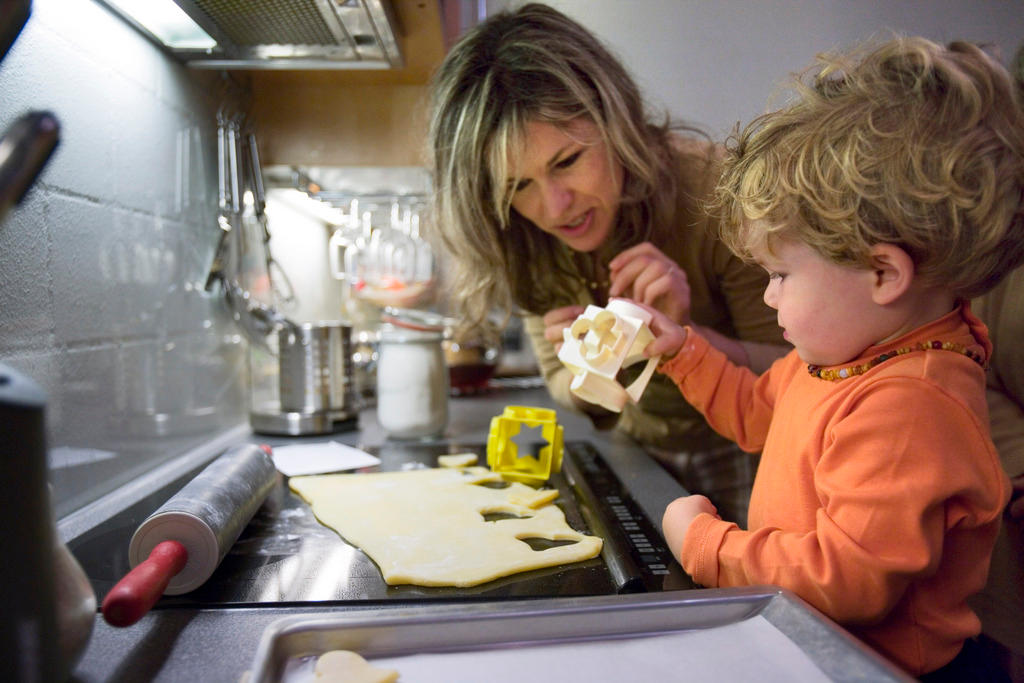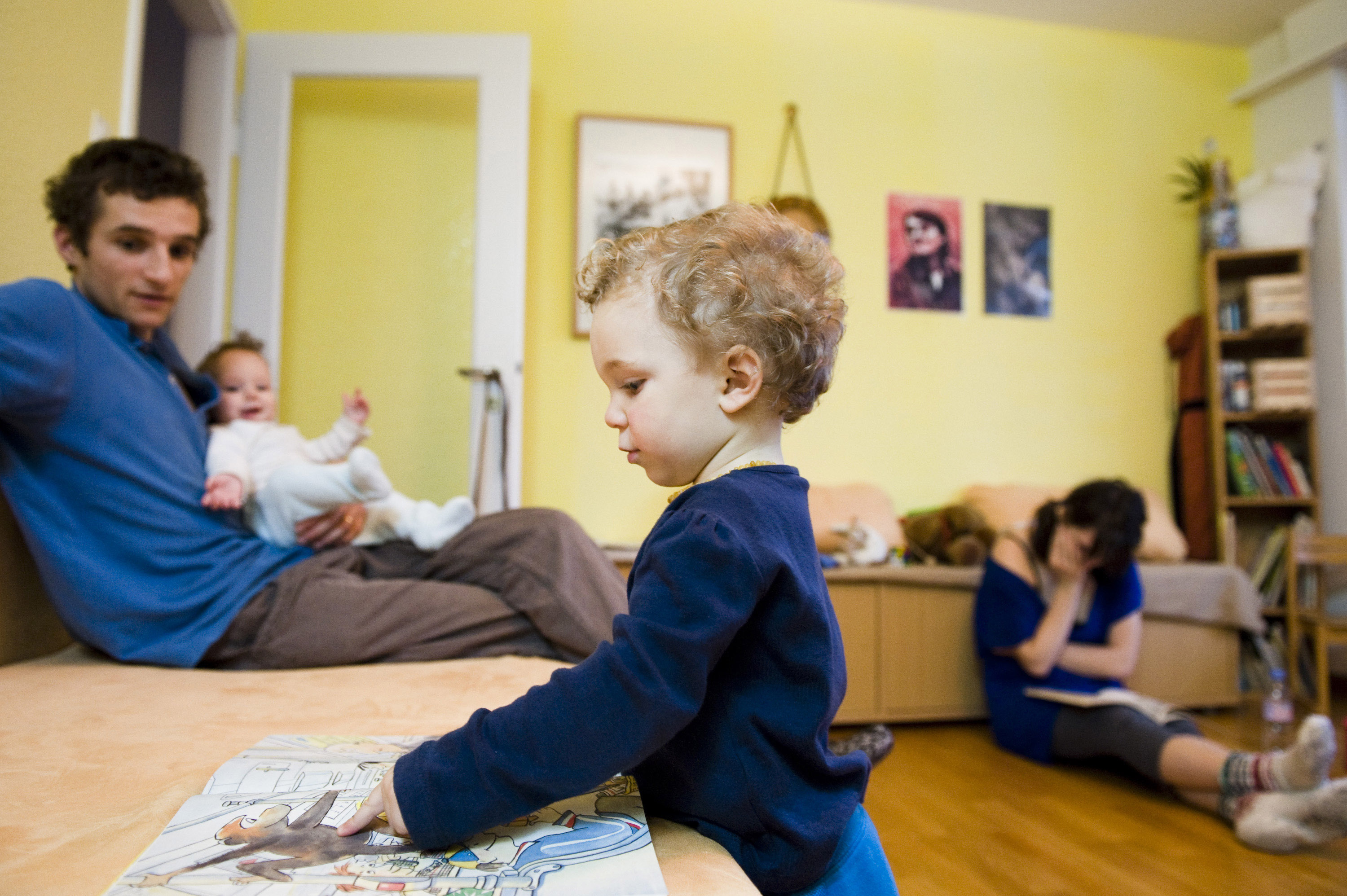Three times as many young mothers employed than in 1980

The number of working mothers with preschool-age children has almost trebled in Switzerland since 1980 – but regional and socioeconomic differences abound, according to the latest instalment of the Social Change in Switzerland research series.
“Part-time work has become the norm. The model of the mother as a housewife – still dominant in the 1990s – is now experienced by just a minority of women,” wrote the authors of the study, published on Thursday.
The researchers based their findings on the censuses of 1980, 1990 and 2000 as well as the structural survey from 2010-2014. The data shows that the labour market participation of mothers who have a partner and children aged under four has almost trebled over the past 40 years – albeit with significant regional and socio-demographic differences.
The greatest increase has been seen in the French-speaking cantons. In Valais, for example, the employment rate among young mothers rose from 18% in the 1980s to 69% in 2010.”
Family size a growing factor
Four further factors were examined. The first, family size, revealed that today, the more children a woman has, the less likely she is to be employed. In the past, the number of children had a smaller influence on the employment activity of the few women who participated in the labour market.
When it came to educational level, women with advanced training are today – as in the 1980s – more often employed, although the relationship appears to be weaker than in the past. One exception: the “penalising effect” of the lack of an advanced degree among mothers in partnerships with men who hold such qualifications appears to have intensified. The authors put this phenomenon down to the wage gap between male and female workers – especially given the growing cost of institutional child care.
Nationality also played a role, according to the study. Whereas in the 1980s fewer Swiss women (who had a partner and children aged under four) were part of the labour force than foreign women; today, the reverse is true.
Finally, marital status was taken into account. Mothers who live with a partner but who are not married still work more than married mothers, but this difference has greatly decreased from 50% in 1990 to 10% in 2010-2014.
The Social Change in SwitzerlandExternal link research project is co-edited by the Swiss Centre of Expertise in the Social Sciences, the University of Lausanne and the Swiss National Centre of Competence in Research.

In compliance with the JTI standards
More: SWI swissinfo.ch certified by the Journalism Trust Initiative












You can find an overview of ongoing debates with our journalists here . Please join us!
If you want to start a conversation about a topic raised in this article or want to report factual errors, email us at english@swissinfo.ch.